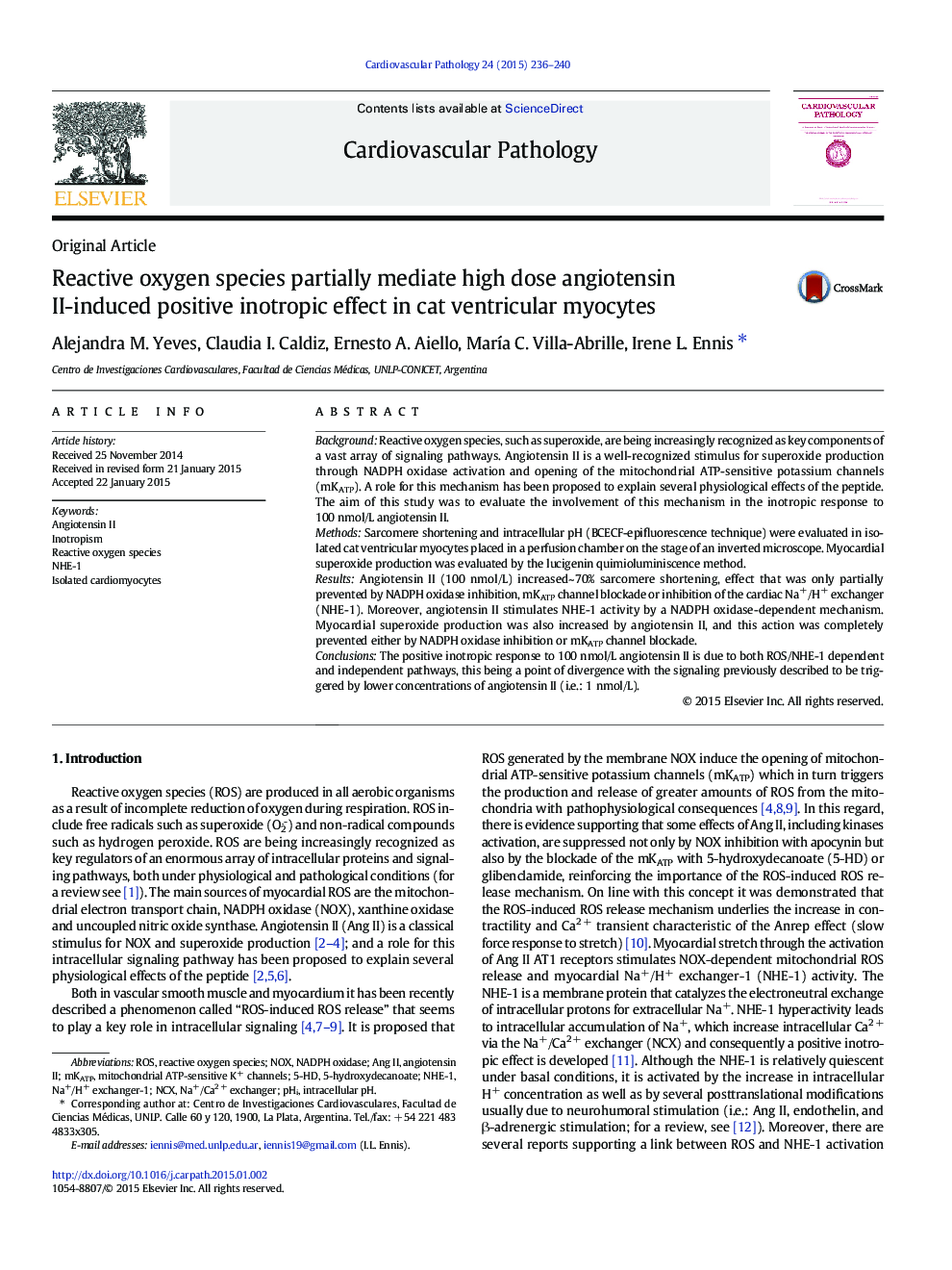| Article ID | Journal | Published Year | Pages | File Type |
|---|---|---|---|---|
| 2898688 | Cardiovascular Pathology | 2015 | 5 Pages |
BackgroundReactive oxygen species, such as superoxide, are being increasingly recognized as key components of a vast array of signaling pathways. Angiotensin II is a well-recognized stimulus for superoxide production through NADPH oxidase activation and opening of the mitochondrial ATP-sensitive potassium channels (mKATP). A role for this mechanism has been proposed to explain several physiological effects of the peptide. The aim of this study was to evaluate the involvement of this mechanism in the inotropic response to 100 nmol/L angiotensin II.MethodsSarcomere shortening and intracellular pH (BCECF-epifluorescence technique) were evaluated in isolated cat ventricular myocytes placed in a perfusion chamber on the stage of an inverted microscope. Myocardial superoxide production was evaluated by the lucigenin quimioluminiscence method.ResultsAngiotensin II (100 nmol/L) increased~70% sarcomere shortening, effect that was only partially prevented by NADPH oxidase inhibition, mKATP channel blockade or inhibition of the cardiac Na+/H+ exchanger (NHE-1). Moreover, angiotensin II stimulates NHE-1 activity by a NADPH oxidase-dependent mechanism. Myocardial superoxide production was also increased by angiotensin II, and this action was completely prevented either by NADPH oxidase inhibition or mKATP channel blockade.ConclusionsThe positive inotropic response to 100 nmol/L angiotensin II is due to both ROS/NHE-1 dependent and independent pathways, this being a point of divergence with the signaling previously described to be triggered by lower concentrations of angiotensin II (i.e.: 1 nmol/L).
Graphical abstractFigure optionsDownload full-size imageDownload high-quality image (136 K)Download as PowerPoint slide
